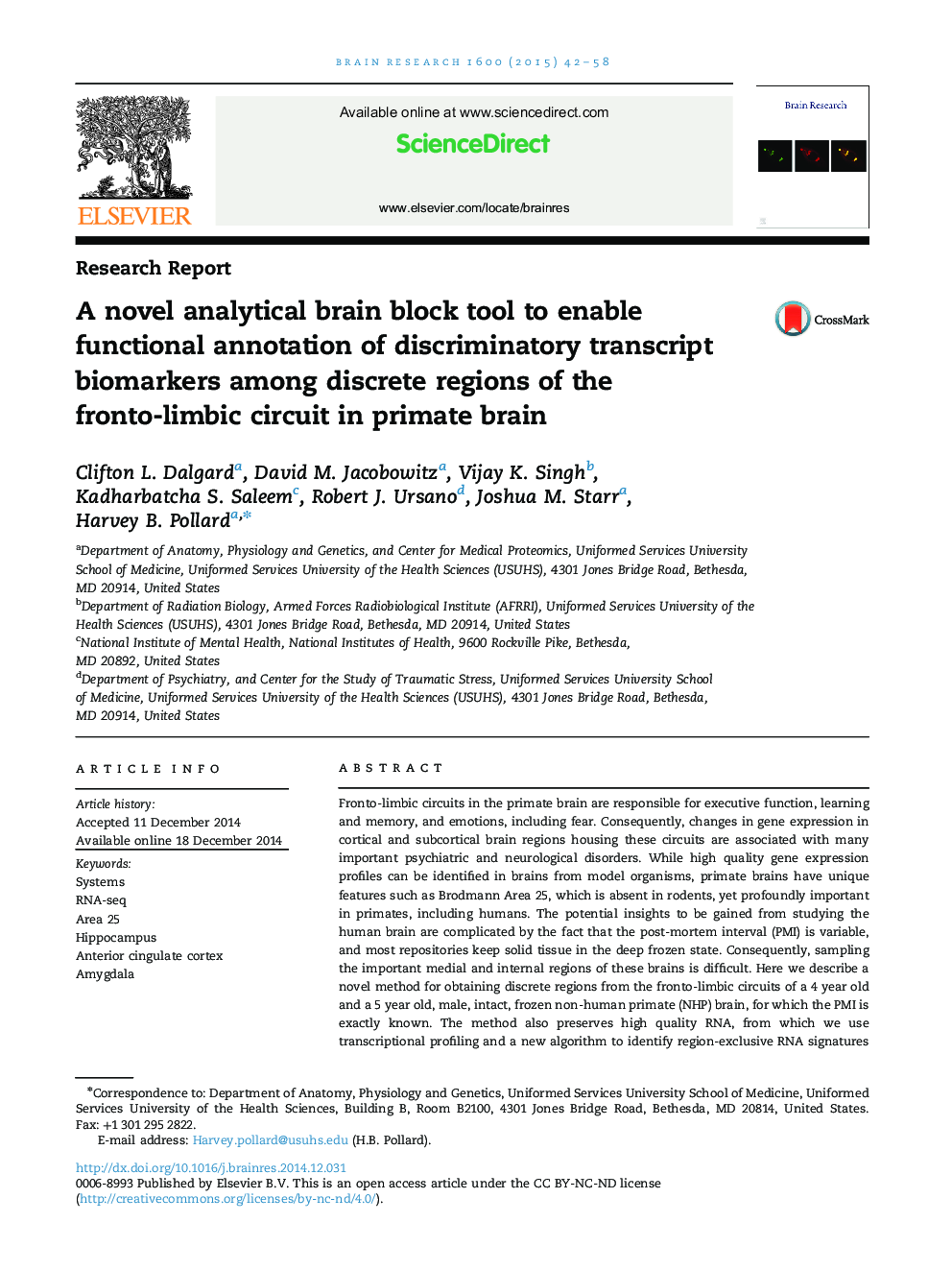| Article ID | Journal | Published Year | Pages | File Type |
|---|---|---|---|---|
| 6263135 | Brain Research | 2015 | 17 Pages |
â¢We construct a novel analytical brain block tool to dissect frozen Rhesus brain.â¢RNA-Seq identifies 9320 transcripts in 4 regions of the fronto-limbic circuit.â¢Comparative marker selection algorithm identifies differentially enriched RNAs.â¢Brain regions are Area 25, anterior cingulate cortex, amygdala and hippocampus.â¢The deduced RNA signatures reflect specific functions of the different brain regions.
Fronto-limbic circuits in the primate brain are responsible for executive function, learning and memory, and emotions, including fear. Consequently, changes in gene expression in cortical and subcortical brain regions housing these circuits are associated with many important psychiatric and neurological disorders. While high quality gene expression profiles can be identified in brains from model organisms, primate brains have unique features such as Brodmann Area 25, which is absent in rodents, yet profoundly important in primates, including humans. The potential insights to be gained from studying the human brain are complicated by the fact that the post-mortem interval (PMI) is variable, and most repositories keep solid tissue in the deep frozen state. Consequently, sampling the important medial and internal regions of these brains is difficult. Here we describe a novel method for obtaining discrete regions from the fronto-limbic circuits of a 4 year old and a 5 year old, male, intact, frozen non-human primate (NHP) brain, for which the PMI is exactly known. The method also preserves high quality RNA, from which we use transcriptional profiling and a new algorithm to identify region-exclusive RNA signatures for Area 25 (NFκB and dopamine receptor signaling), the anterior cingulate cortex (LXR/RXR signaling), the amygdala (semaphorin signaling), and the hippocampus (Ca++ and retinoic acid signaling). The RNA signatures not only reflect function of the different regions, but also include highly expressed RNAs for which function is either poorly understood, or which generate proteins presently lacking annotated functions. We suggest that this new approach will provide a useful strategy for identifying changes in fronto-limbic system biology underlying normal development, aging and disease in the human brain.
